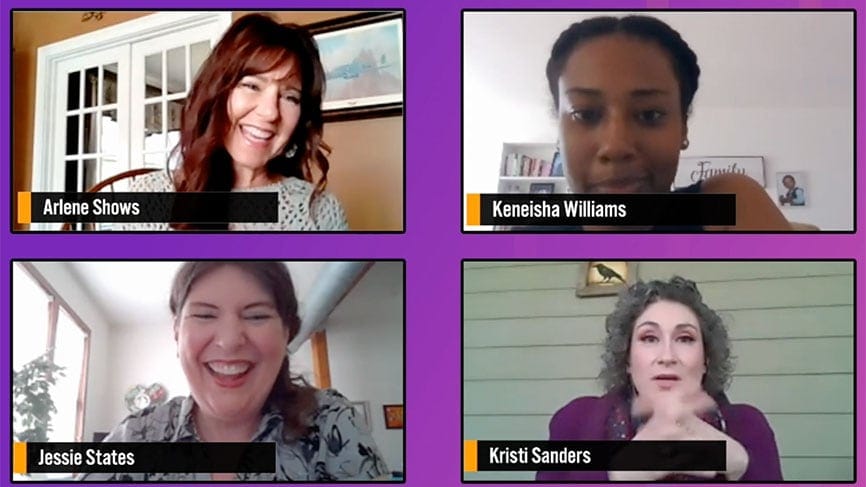If producing hybrid events were an Olympic sport, most meeting professionals would have no trouble qualifying as amateurs. By experimenting with their own events, they are inventing what the future of meetings will look like. To jumpstart that process, along came EventHack Hybrid Games—an attempt to raise the proficiency of the industry by fielding teams of meeting professionals (72 participants in all) against each other.
Over seven weeks from September to November, teams pitched creative ideas to a rotating panel of judges on topics as diverse as audience engagement, sponsorship, networking, event flow and design. As Corey McCarthy, chief marketing officer with the event technology platform Socio, explained, “This is where the industry’s best and brightest come together to battle it out until we figure it out.”
In full disclosure, I was a judge one week, ranking competitors along with the audience based on innovation, applicability and hybrid strategy in a Shark Tank-style format. Picking the winner was made difficult, especially since we judges agreed what we really wanted to see was an approach that merged cool ideas from all the competitors.
However, at the end of the competition, the winning competitor was Craft Masters, a group that focused on the attendee journey.
Socio—which just launched an integrated streaming solution using StreamYard to easily brand livestream, add colors, logos, lower-thirds, commercials and pre-recorded video—produced the competition, along with Will Curran, Chief Event Einstein of Endless Events and host of the popular podcast Event Brew.
Congrats to Team CraftMasters 🍸on winning the #EventHack Hybrid Games! Check out their winning presentation where they planned a hybrid version of @tableau's annual conference.
Caryn Mambro & Alec Catalano – @OpusAgency, @khartline, @darcygabehttps://t.co/gn4Betm3uK
— Webex Events (formerly Socio) (@webexevents) November 23, 2020
Time to Bulk Up
Digital consultant Nick Borelli co-designed the campaign and shared suggestions meeting professionals might want to consider when approaching their own hybrid events.
“Be flexible; shift to design thinking,” he advised. “That will allow you to be a problem-solver and change agent. Throw out everything you thought you knew and find inspiration from outside sources.” Those sources could be as diverse as esports, Peloton and Netflix. “We get to write the rule book for virtual. That is exciting,” he said.
Borelli compared the push to master the virtual side of hybrid events to a strategic exercise program. “Think about it like lifting weights. We have had arm days for years but neglected our legs. We have to build new muscles for virtual.”
Borelli explained that both physical and virtual events have weaknesses and benefits. In-person events excel at experiential aspects because they are rich in sensory experience. But the opportunity in streaming content is the power of emotional storytelling—because you control the eye with the lens.
“One is a tactile world of trust-building; the other is an emotional pull. That is why a 30-second commercial can bring a tear to the eye but shaking someone’s hand and getting a business card at a trade show doesn’t,” he explained.
Hybrid creates a community that engages both of those things and cross-pollinates. Play into the strengths of each so the people on both sides want what is on the opposite side.
“We always needed both, but it took this pandemic scenario to force us to use it,” he concluded. “You don’t innovate when things are good. Evolution doesn’t happen without pain. Now we have a reason to create the future of experiences in hybrid.”
https://twitter.com/socioevents/status/1324751025882935301




